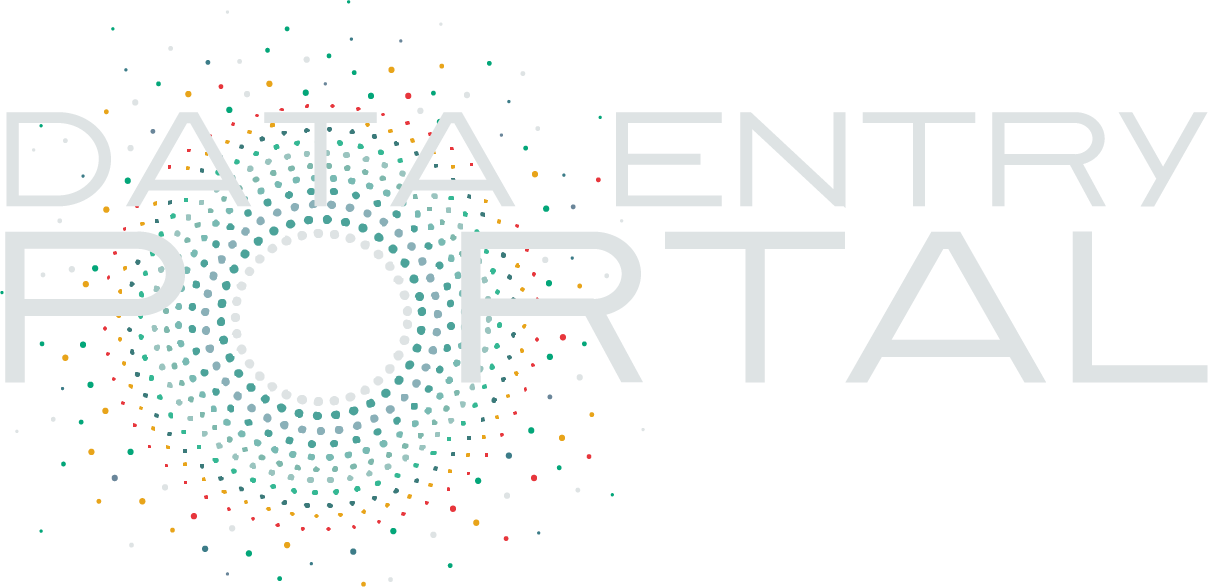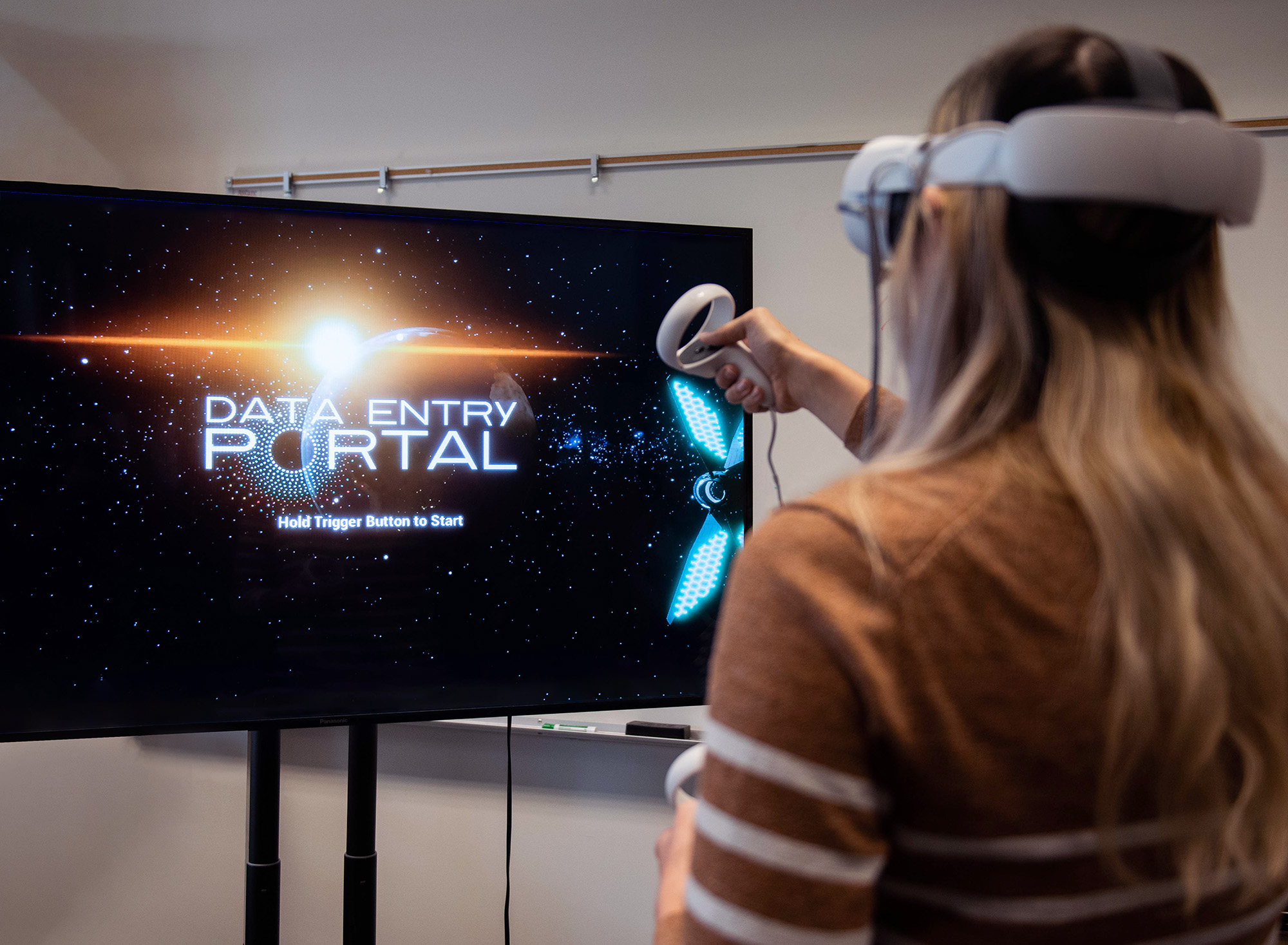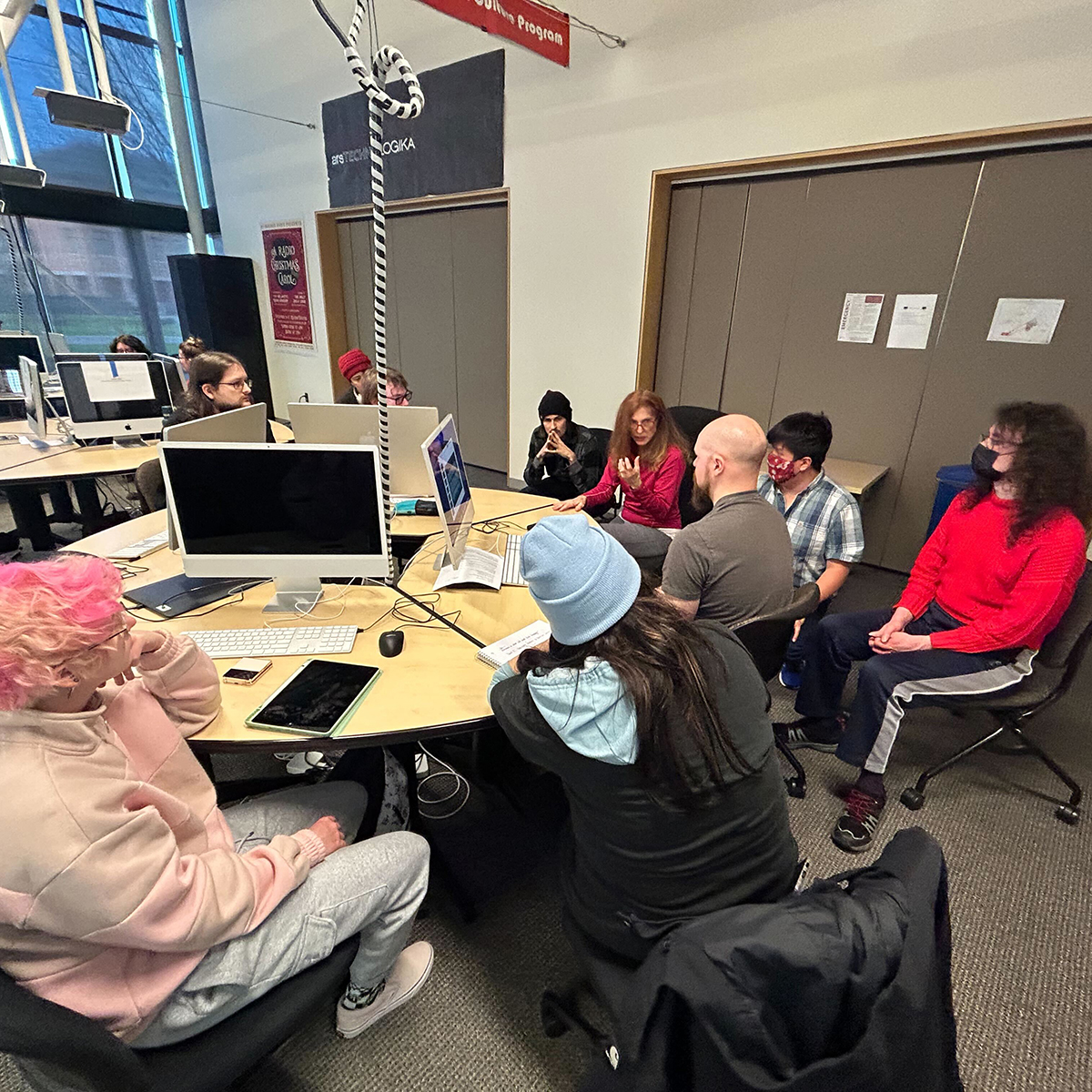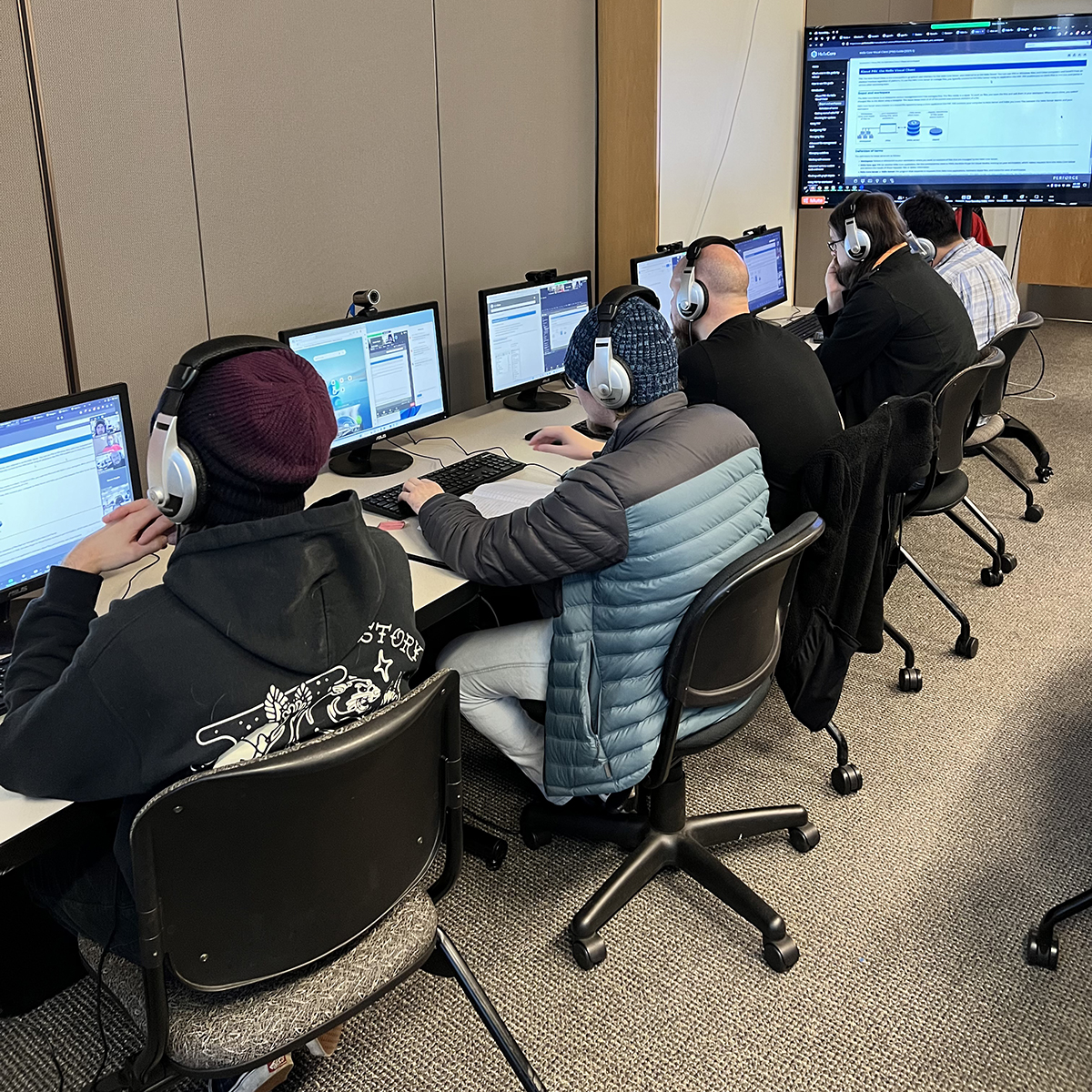
A VR Puzzle Game
To download the demo of the game, visit this webpage from a desktop or laptop


To download the demo of the game, visit this webpage from a desktop or laptop
DATA ENTRY: PORTAL is a VR game sourced from the adventure game Portal created by Rob Swigart and published by Activision in 1986. Moving the gameplay from the 2D space of the Commodore 64 and other early computers to the 3D environment of the Meta Quest 2 enhances player experience through immersive images, sound, and interactive elements.
Over 40 dazzling custom-made 3D models have been produced for DATA ENTRY: Portal.
Players control the gameplay through a holographic console where they interact with buttons, switches, screens, and other elements appearing as “hard light” holographic images they can see and touch in a 360-degree experience. The AI HOMER, who assists players throughout the game, first appears as a frisson of 3D particles that ages and transforms over the game into human form.
What does it mean to rethink a point and click 2D adventure game as a VR puzzle/mystery game?
It means that the core mechanics shift from a keyboard and mouse to VR controllers. It also opens up the gamespace from an interface displayed on a 2D computer screen to one that unfolds in 360 degrees and relies on haptic feedback and movement.

Original music has been created for DATA ENTRY: PORTAL by Vancouver composer and Creative Media & Digital Culture alum Ransom Reed.
All songs included in the game are also made available for free download. The game also features unique environmental sounds and character voices, adding a rich sonic dimension to the game.


Portal is the brainchild of writer Rob Swigart who had become interested science fiction and a prevalent trope of internet consciousness that emerged in the mid-1980s. This genre and concept became the germ of Swigart's idea that the computer screen is a kind of doorway‑‑a portal‑‑into a different fictional world. After writing a music software program manual for Activision, Swigart proposed his idea for Portal to the company. Swigart's friend, Gilman Louie, who owned a company called Nexa (later Spectrum-Holobyte), came on board as the game's programmer. Meetings with Activision led Swigart to create the game as a database management system. The game was released to much acclaim in 1986.is the brainchild of writer Rob Swigart who had become interested in science fiction. No longer accessible in its original format, Portal can still be played through emulation software.
Two years after Portal was released, Swigart published Portal: A Dataspace Retrieval with St. Martin's Press. Three hundred and thirty-three pages in length, the novel builds on the game's narrative, fleshing out the backstories of the characters and events. The book also goes deeper into the relationship between the main character Peter Devore and the protagonist Protector Regent Sable, more strongly establishing their kinship. Readers also learn more about the Anomaly Peter and his followers discover in Antarctica and the portal that takes them beyond Earth. The book is still available to the public through Amazon, with a new book jacket cover designed by Joseph Tijerina of the Design Team.

From the Design Team creating the initial sketches of the AI HOMER, to the Game Dev Team programming the 3D models in Unreal Engine, to the Social Media Team promoting the game on TikTok, you can get a peek at the production of this VR game over the two phases of its development. The first video features Phase 1 of the project, undertaken by 26 Spring 2023 graduates; the second, the work the 23 Fall 2023 grads completed for Phase 2. All students pursued majors in Digital Technology & Culture and were assisted by faculty and alums associated with the Electronic Literature Lab at Washington State University Vancouver.



To download game, visit this webpage from a desktop or laptop